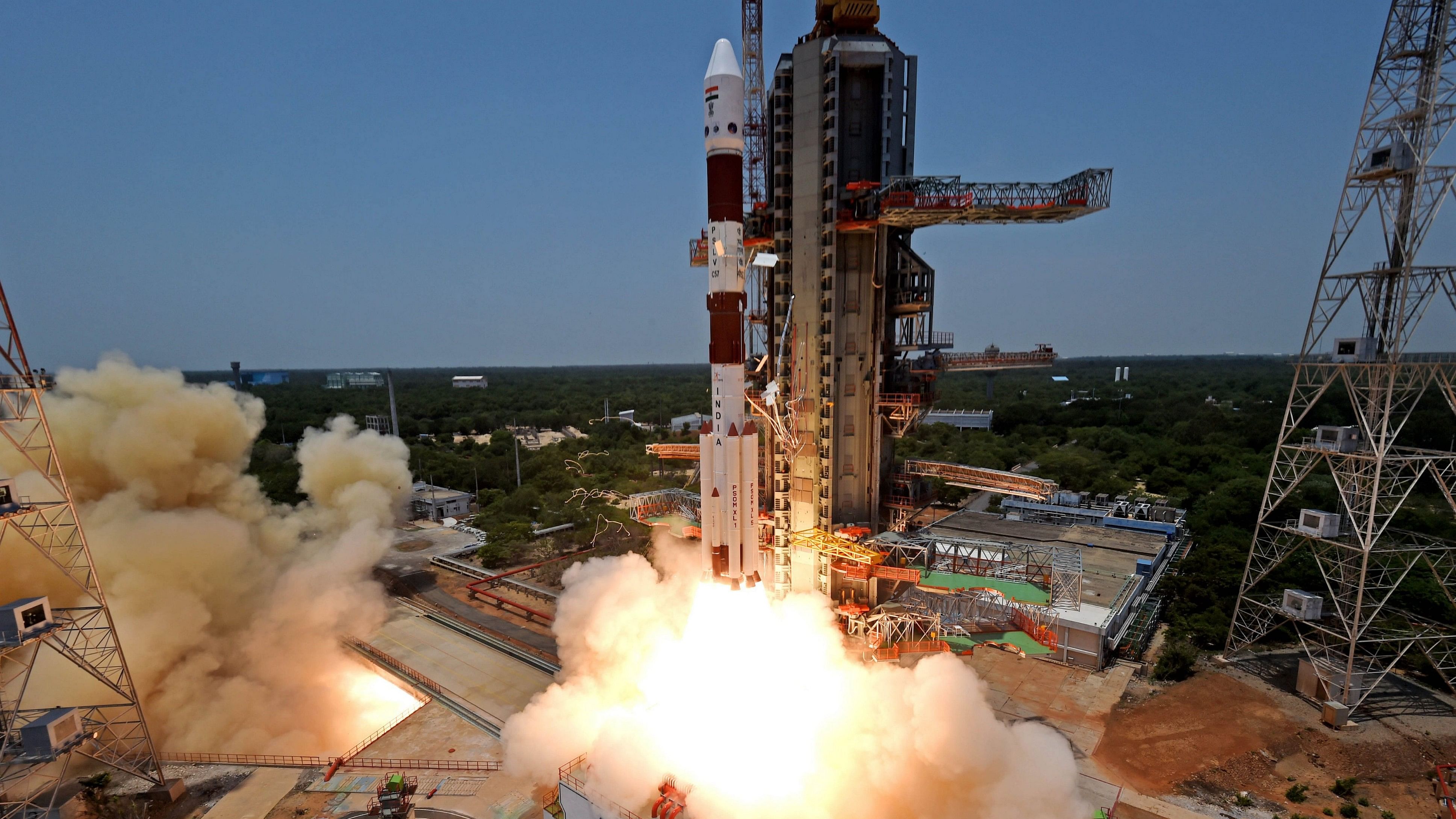
In this file photo, ISRO's PSLV-C57 carrying Aditya-L1, India's maiden solar mission spacecraft, lifts off from the launch pad at Satish Dhawan Space Centre, in Sriharikota.
Credit: PTI Photo
Bengaluru: Aditya-L1, India’s first space-based observatory to study the sun, on Tuesday completed its first halo orbit around L1, the first Lagrangian point in the sun-earth system.
The spacecraft in the halo orbit, located about 1.5 million km from the earth, takes 178 days to complete a revolution around L1.
Launched on September 2, 2023, the spacecraft was inserted in its targeted halo orbit on January 6, 2024. This is a three-dimensional orbit at L1 that involves the sun, the earth, and the spacecraft. ISRO selected the halo orbit to ensure a mission lifetime of five years and minimal station-keeping manoeuvres to facilitate an unobstructed view of the sun.
The Indian Space Research Organisation (ISRO) said the spacecraft in the halo orbit is subjected to various perturbing forces that can drive it off the targeted orbit. Aditya-L1 underwent two station-keeping manoeuvres, on February 22 and June 7, to maintain this orbit.
A third such manoeuvre, performed on Tuesday, has ensured that the spacecraft’s travel continued into the second halo orbit path around L1, ISRO said.
ISRO, with its understanding of the perturbing forces at play, could determine the spacecraft’s trajectory accurately and plan the orbit manoeuvres. “With today's manoeuvre, the state-of-the-art flight dynamics software developed in-house at URSC (U R Rao Satellite Centre)-ISRO for the Aditya-L1 missions stands fully validated,” the space agency said.
Through an illustration of Aditya-L1’s trajectory around L1, ISRO demonstrated how the two previous station-keeping manoeuvres kept the spacecraft in its orbit.
The final firing of the thrusters on Tuesday placed the spacecraft back in its original orbit. The illustration showed how an inaccurate firing could have moved the spacecraft onto a different trajectory.
In June, two payloads on board the observatory – the Solar Ultra Violet Imaging Telescope (SUIT) and the Visible Emission Line Coronagraph (VELC) – had acquired images of the sun after the solar flares and coronal mass ejections on May 10 and 11.